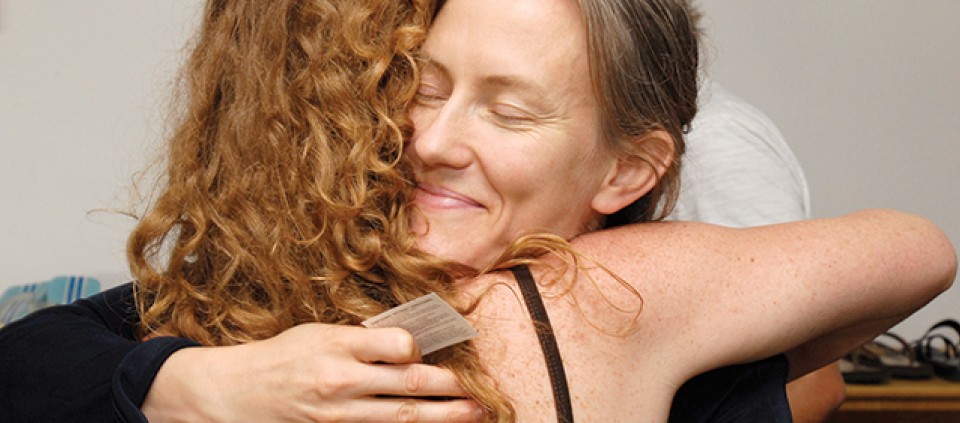The Science of Love

Love—it’s the supreme human emotion. Babies need it to survive, it can improve brain function and health, and it’s even essential for animals (one study showed that rats that were licked more often by their mothers grew up to be calmer and more curious than their less-pampered counterparts). Love may feel more like magic than science, but its effects can be explained—to some degree, at least—in terms of physiology and hormones, as Angela Wilson, a Kripalu presenter and former Yoga Research Specialist for the Kripalu Institute for Extraordinary Living, explained in a talk titled "Love: A Scientific Exploration of Positive Emotions."
Angela began with a short introduction to Positive Psychology, which reframes traditional psychology by shifting the focus from negative emotions (fear, anger, and anxiety, all of which were necessary at one time for survival and evolution) to positive emotions, which help promote reproduction, establish stronger communities, and nurture offspring. Drawing from Barbara Frederickson’s new book, Love 2.0, Angela explained the “broaden and build” theory, which is essentially a feedback loop: Positive emotions (love, joy, contentment) result in a broader range of thoughts and actions, further developing our physical, mental, and social resources (problem-solving skills and relationships, for example), and leading to advances in personal growth, which create—you guessed it—more positive emotions. And what is love but the biggest positive emotion of all? According to Frederickson, love is simply sharing a positive emotion with someone else, “a momentary state that arises to infuse body and mind.”
But while you’re getting goose bumps (the good kind), what’s happening under your skin? Turns out there’s an actual nerve—the vagus nerve—that’s essential for physical and mental well-being. It regulates all of our major bodily functions, from digestion to breathing to brain activity. Good “vagal tone” (which, by the way, can be improved by a regular yoga practice), results in better resilience in all aspects of life and health.
Then there’s oxytocin, known as the “the cuddle hormone,” or, more formally, as Angela described it, “the great facilitator of life.” Directly related to feelings of attachment, it’s responsible for those rushes of good feeling that come over us—not only the big ones that flood the system at intense moments like childbirth or making love, but throughout the day as small amounts of oxytocin are released during positive interactions or when we have happy thoughts.
Where does a yoga retreat, such as ours, come into all this? It’s “a love generator,” Angela says, creating opportunities for connection and empathy through share circles, moving in sync with others during yoga and dance classes, and workshops focusing on mindfulness and conscious communication. When we pay kind, close attention to one another, research shows, our brains actually synch up, and we become better able to read each other’s emotions and needs, leading to a stronger sense of connection. As Swami Kripalu put it, “The key to your heart can be found in the heart of another.”
© Kripalu Center for Yoga & Health. All rights reserved. To request permission to reprint, please e-mail editor@kripalu.org.